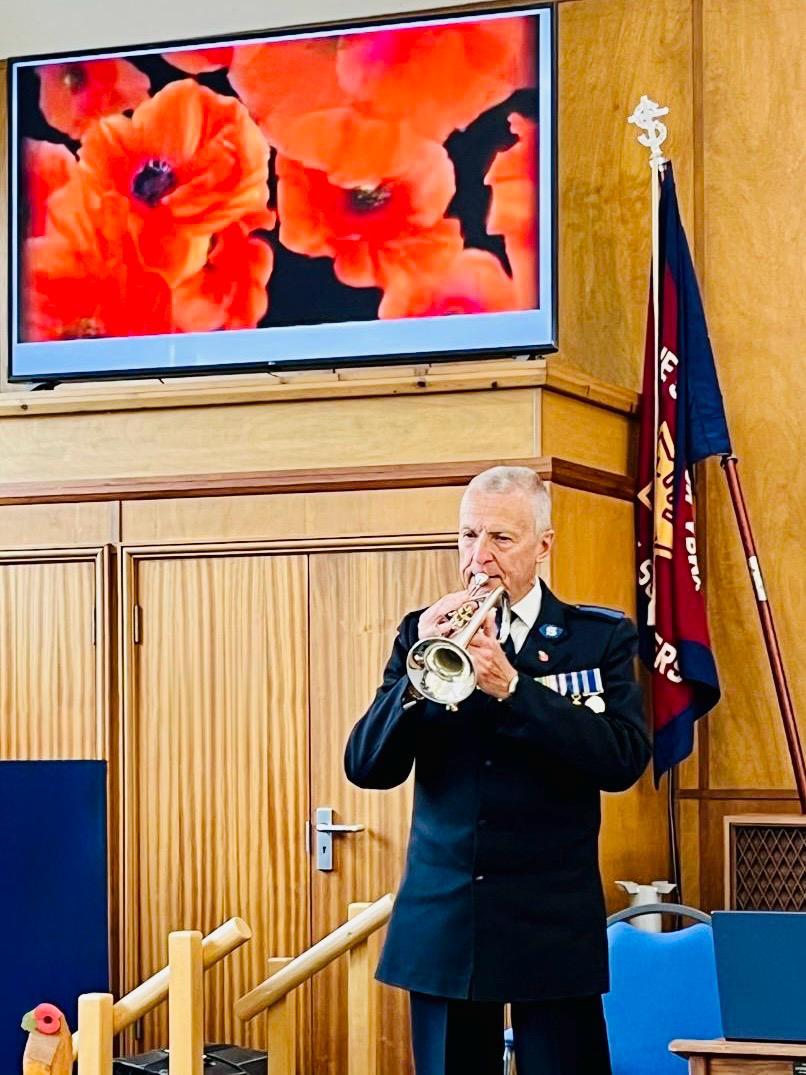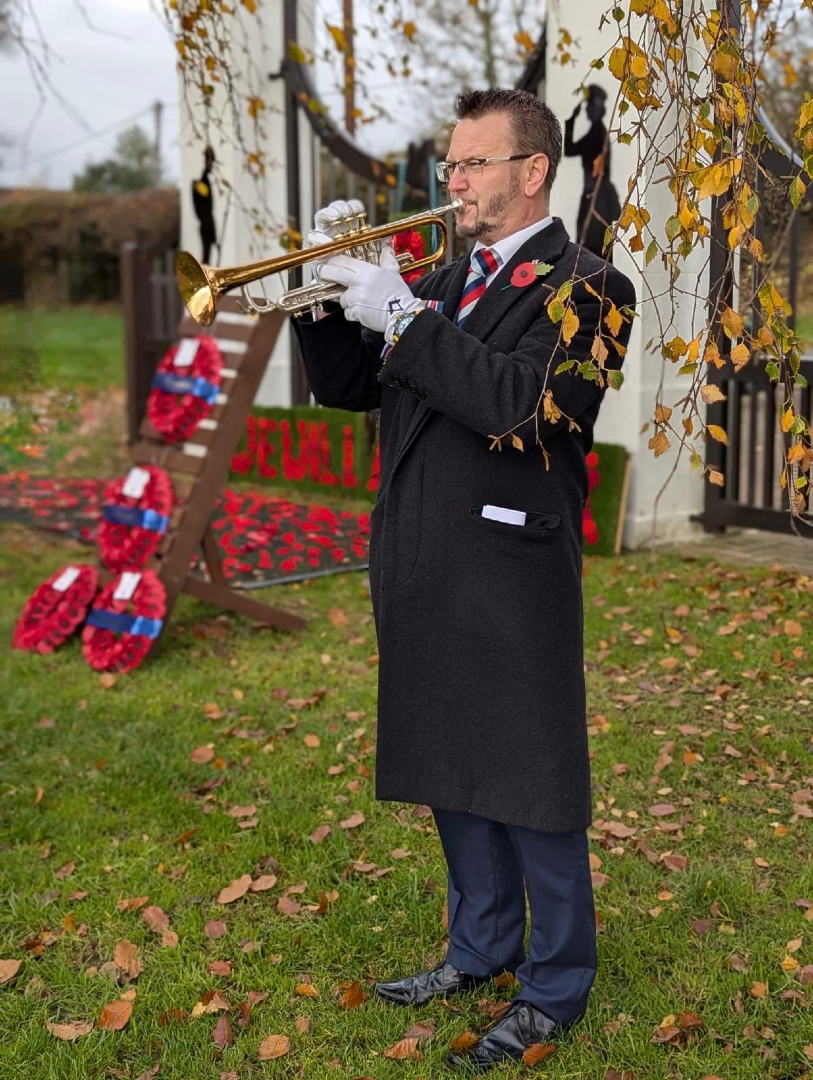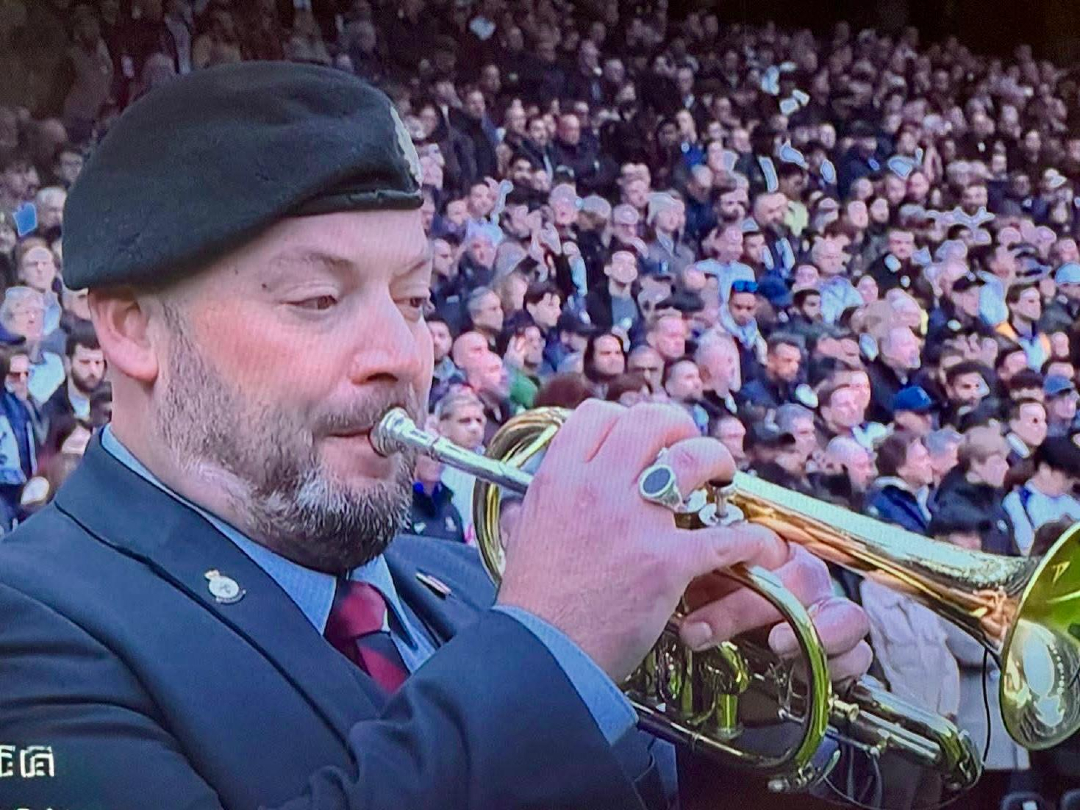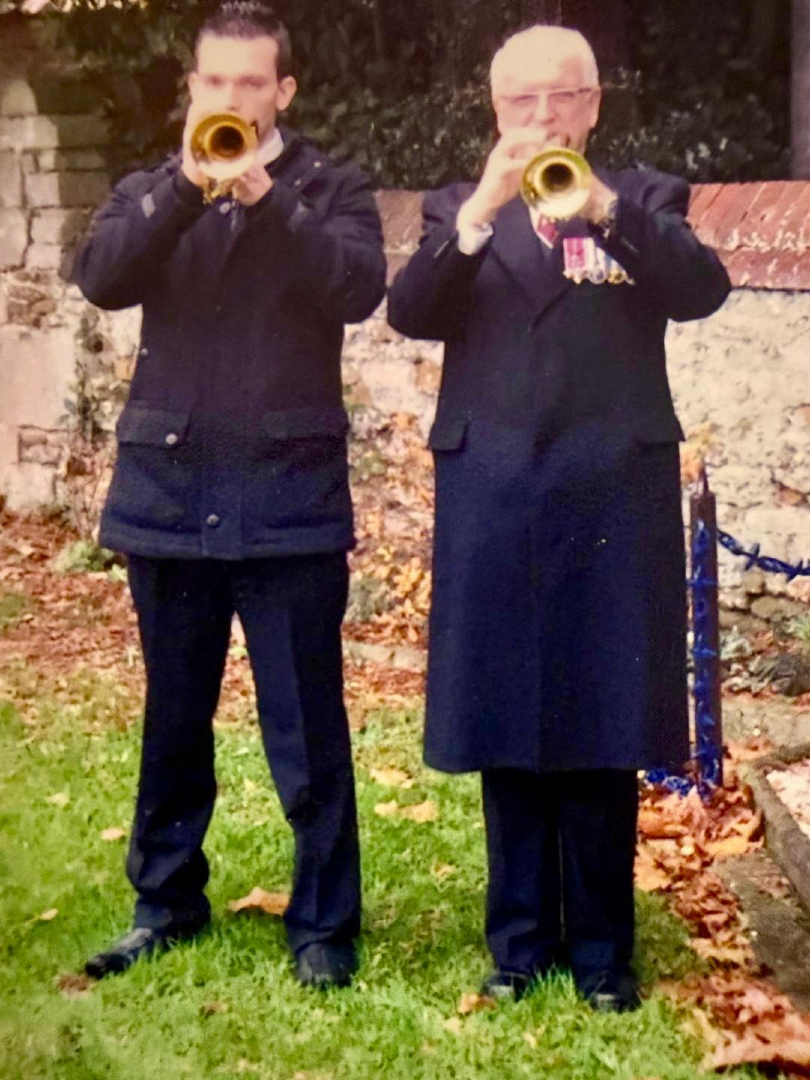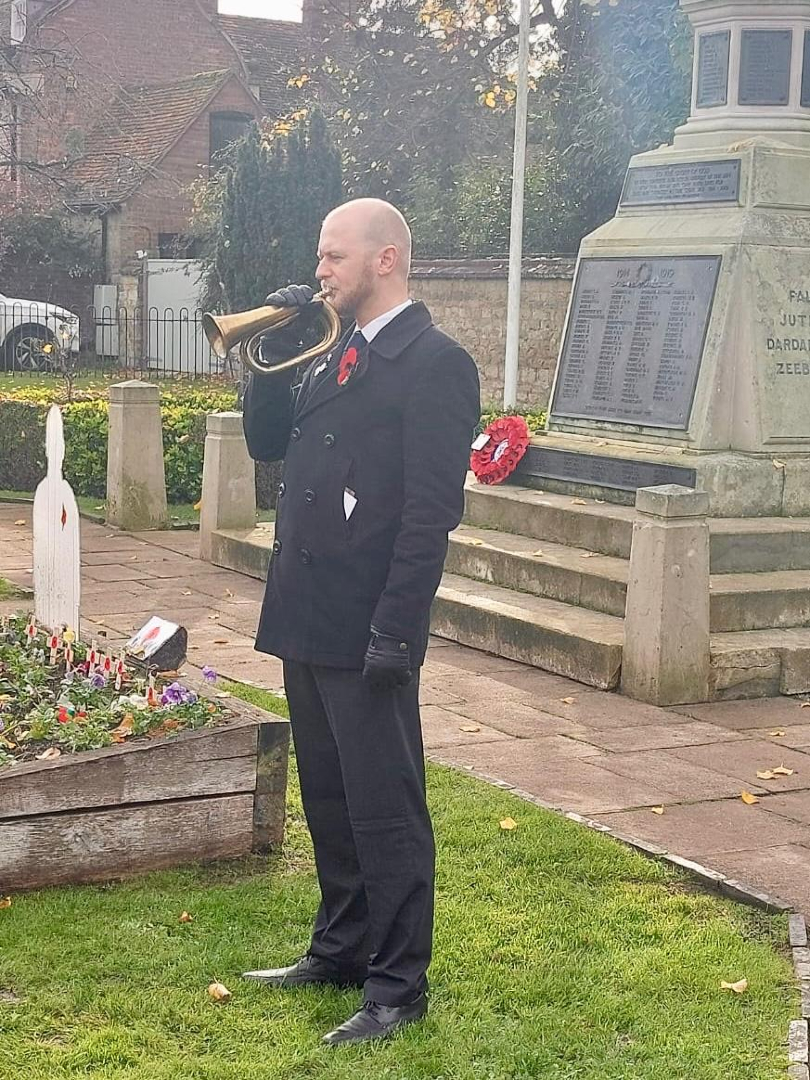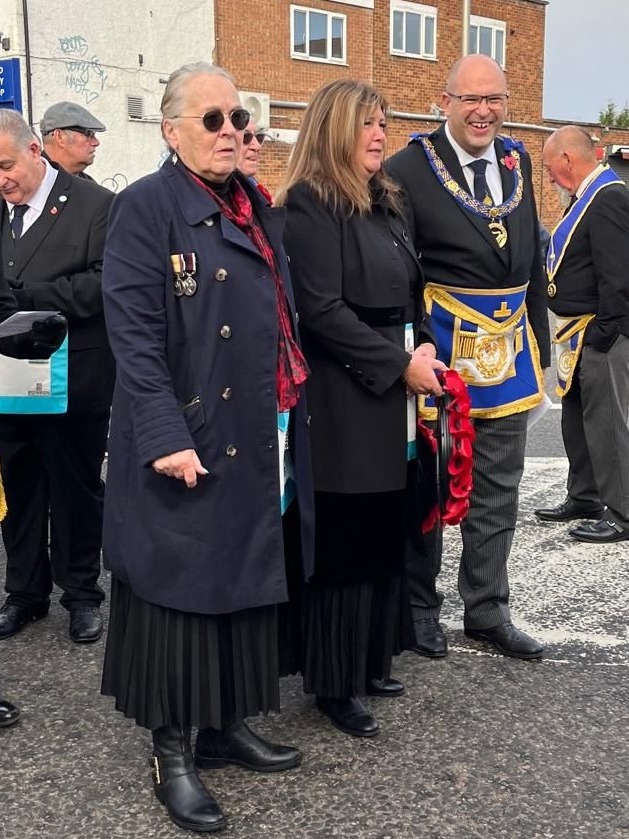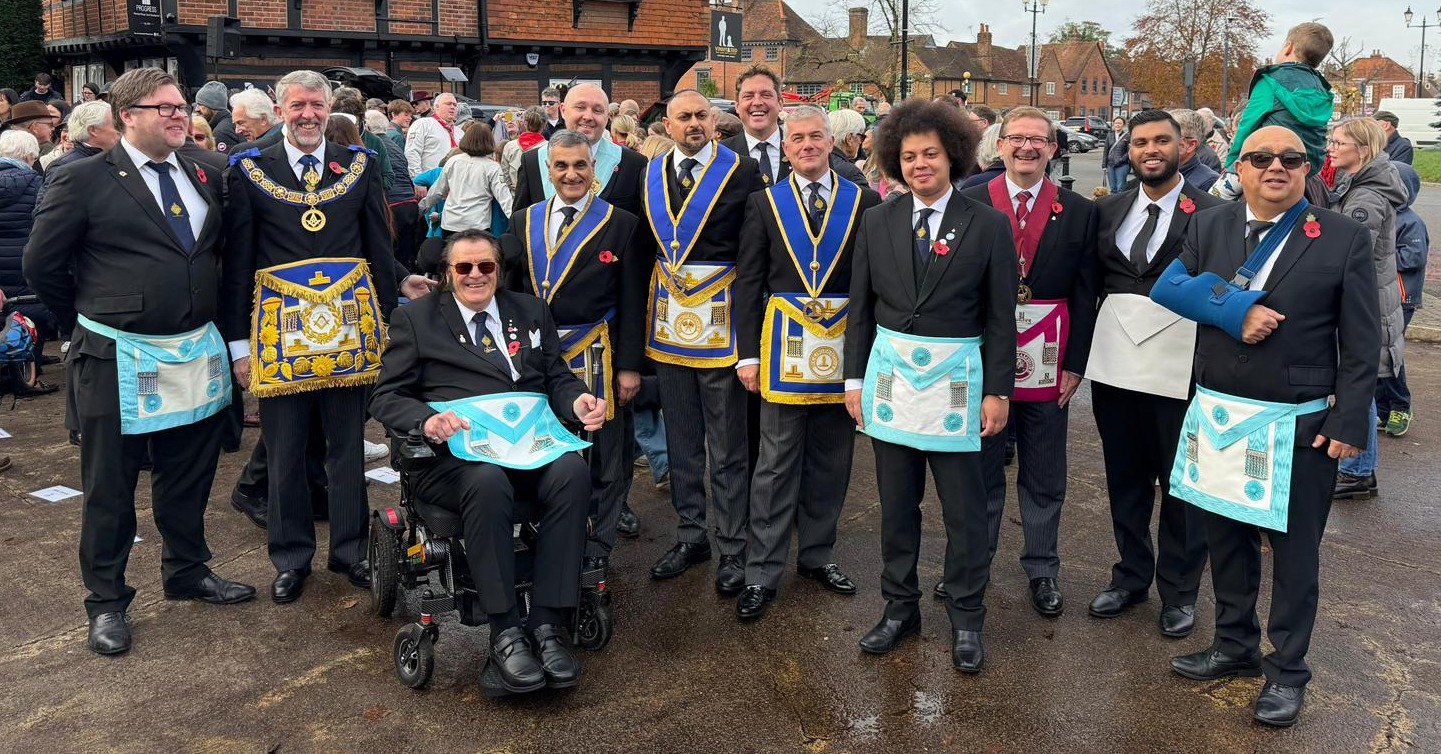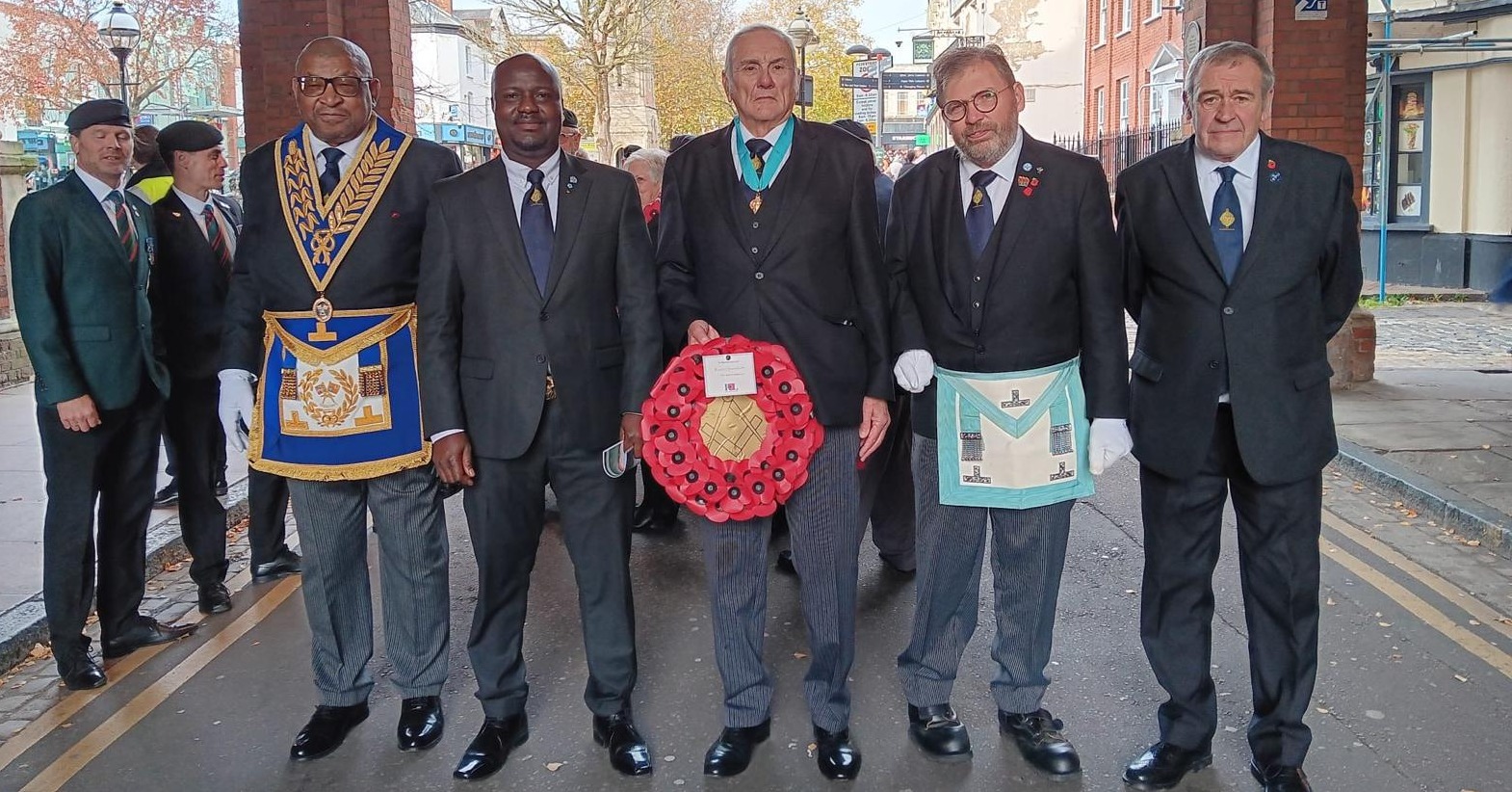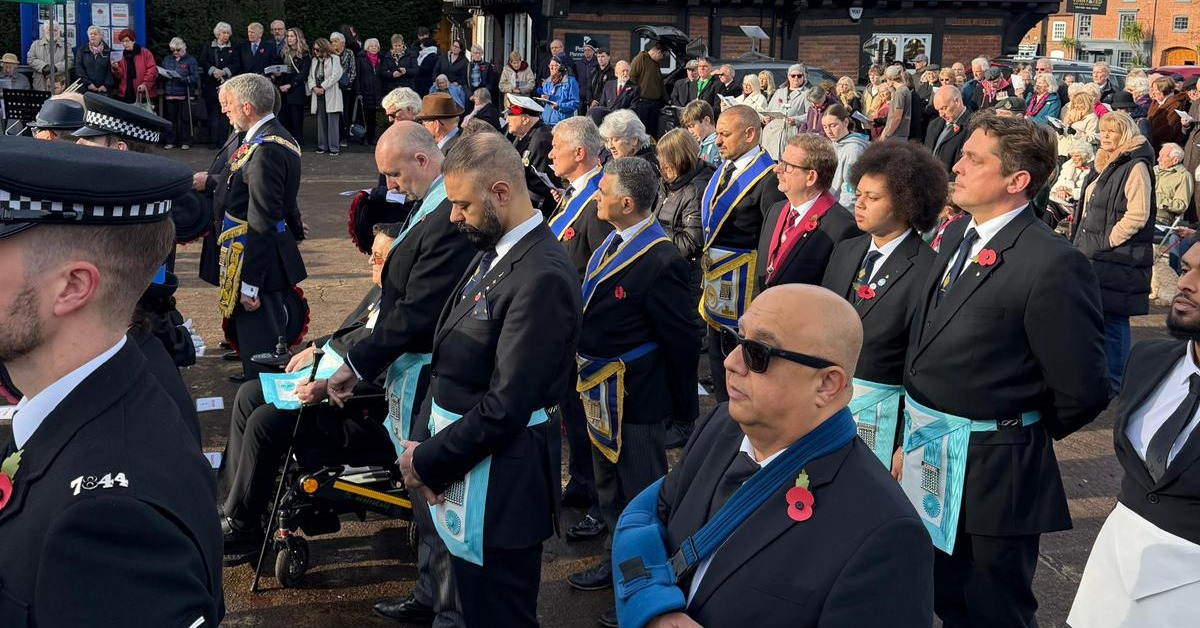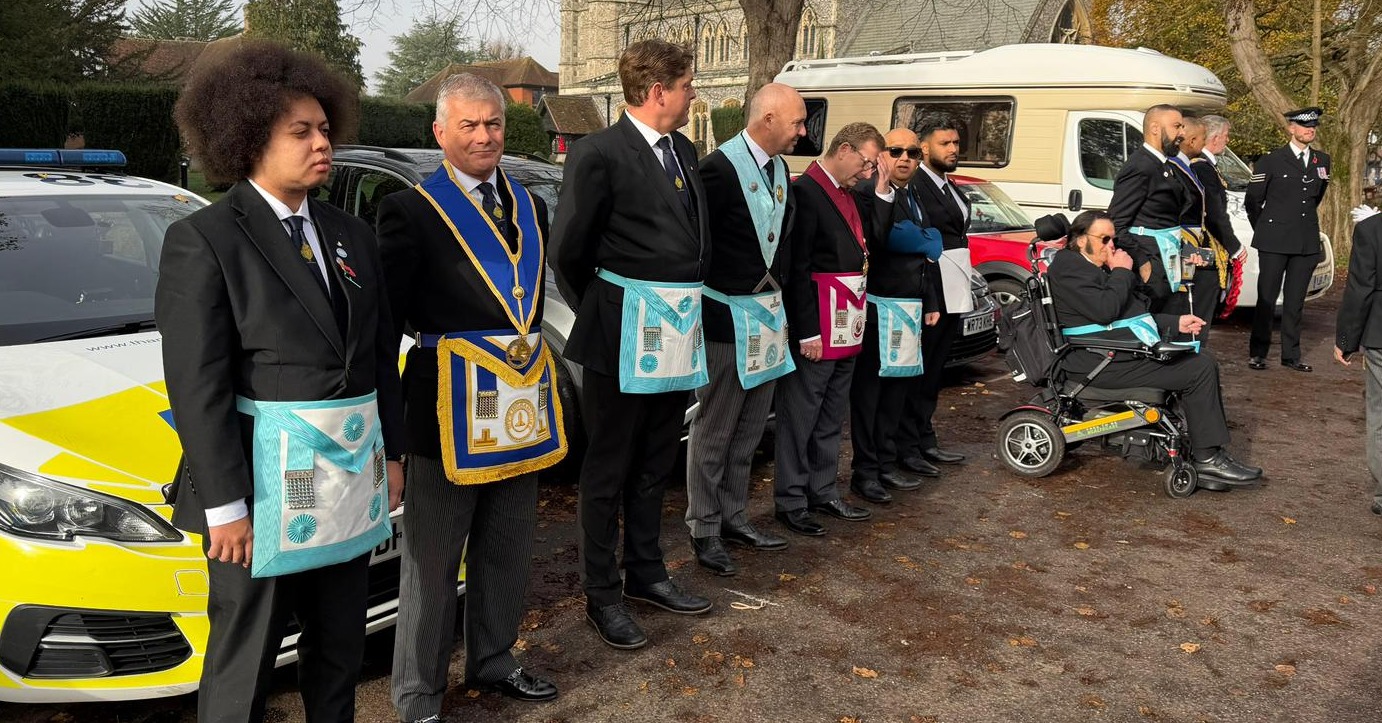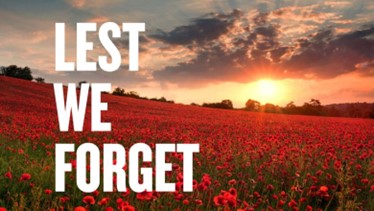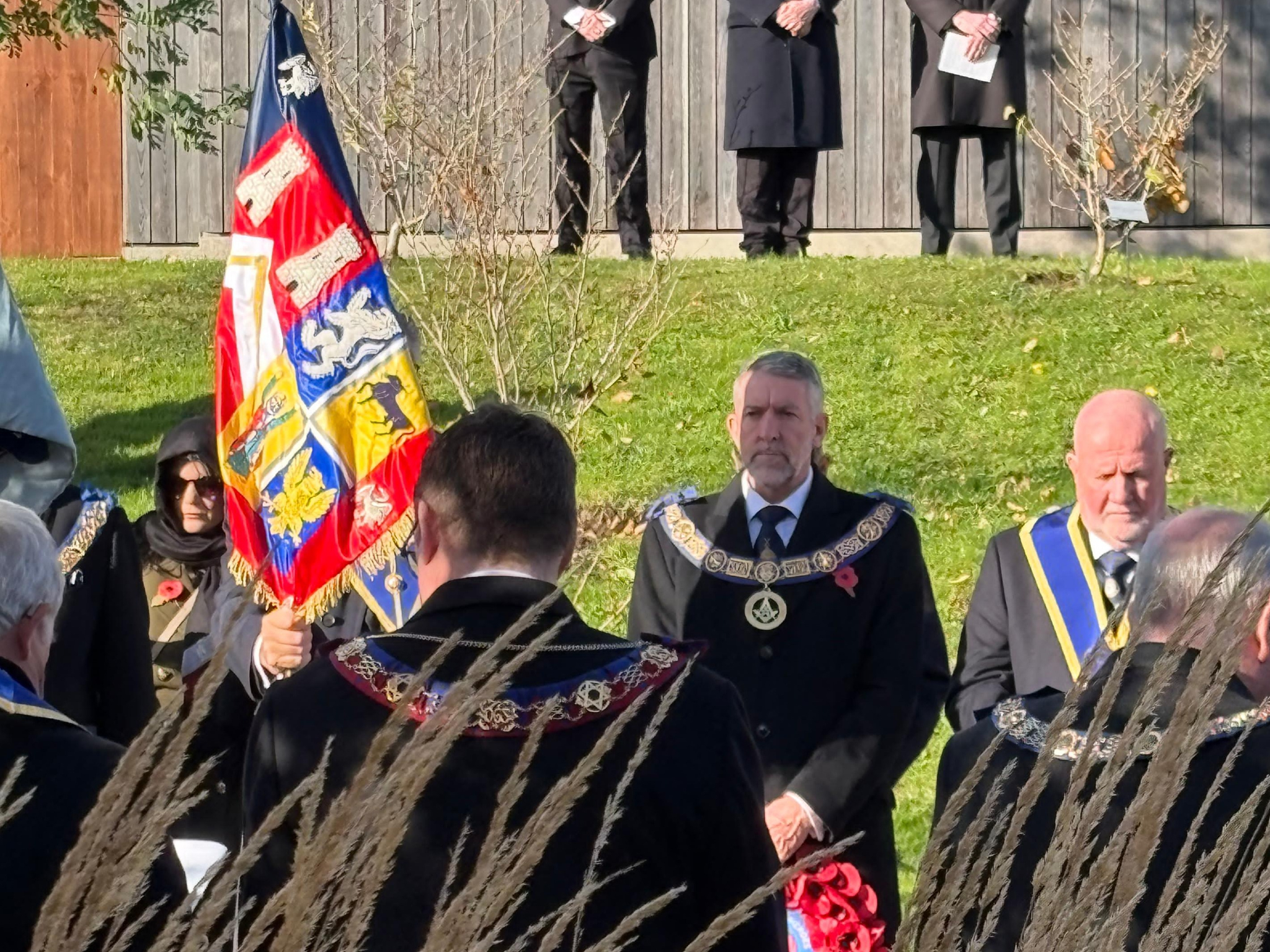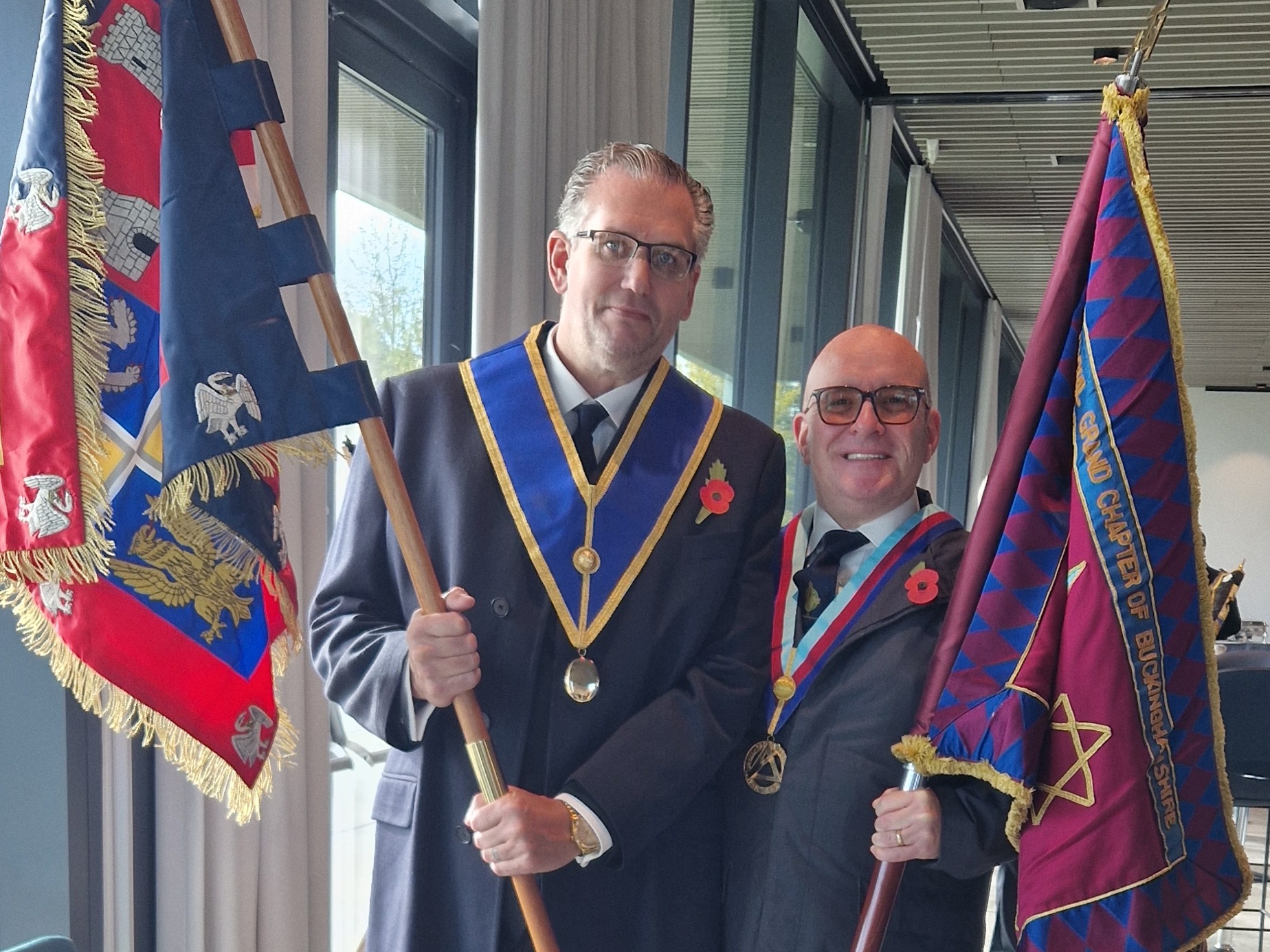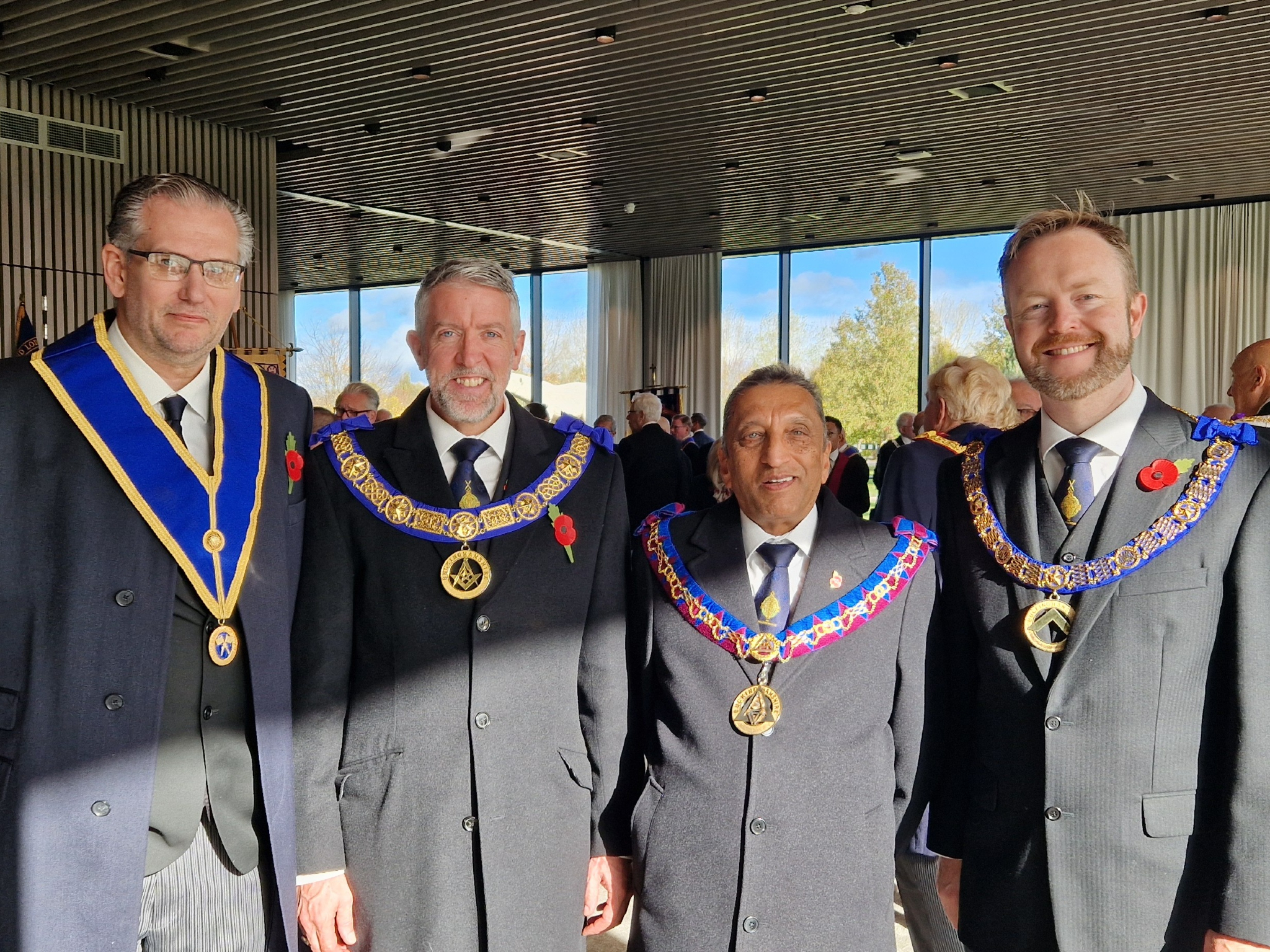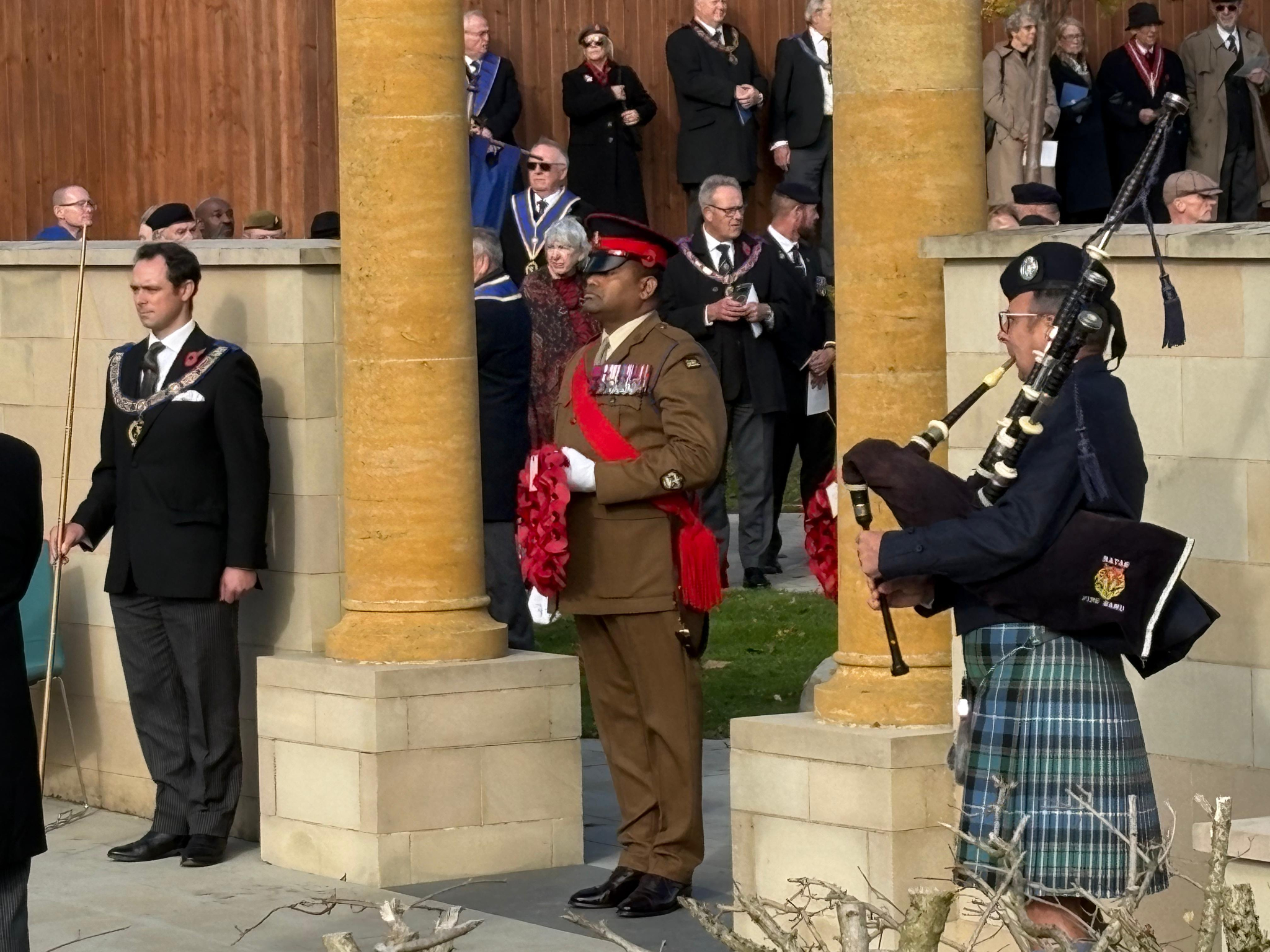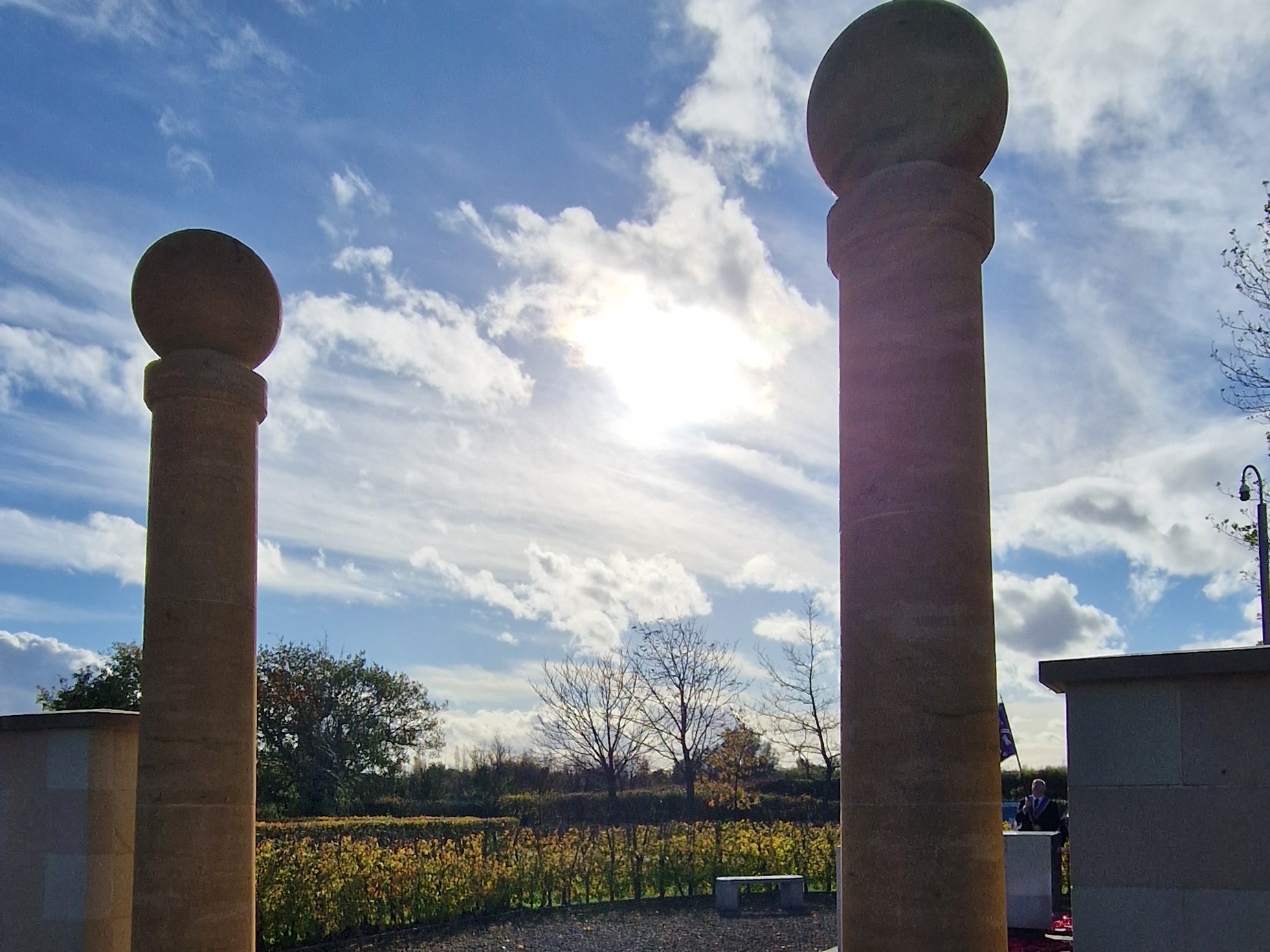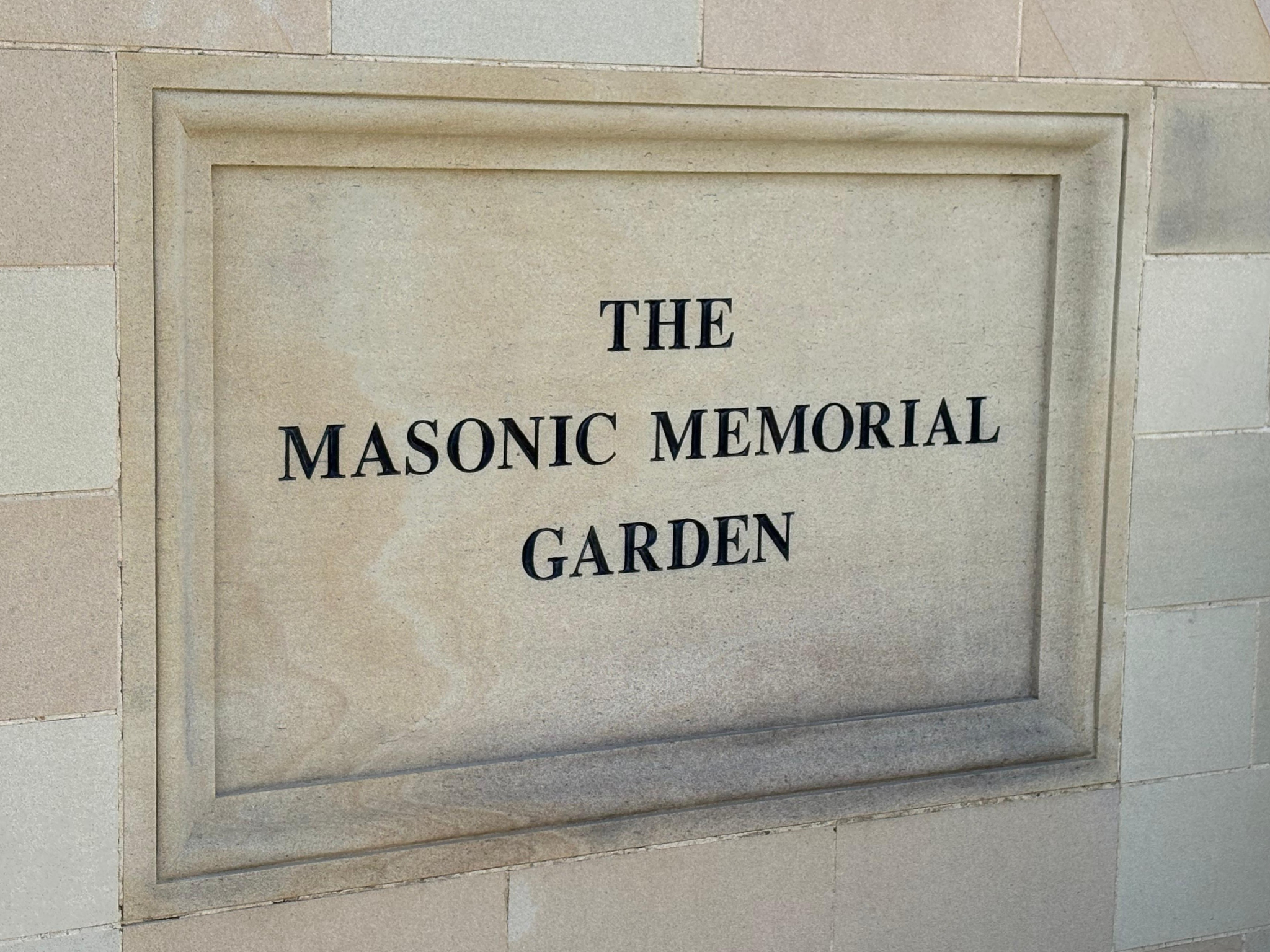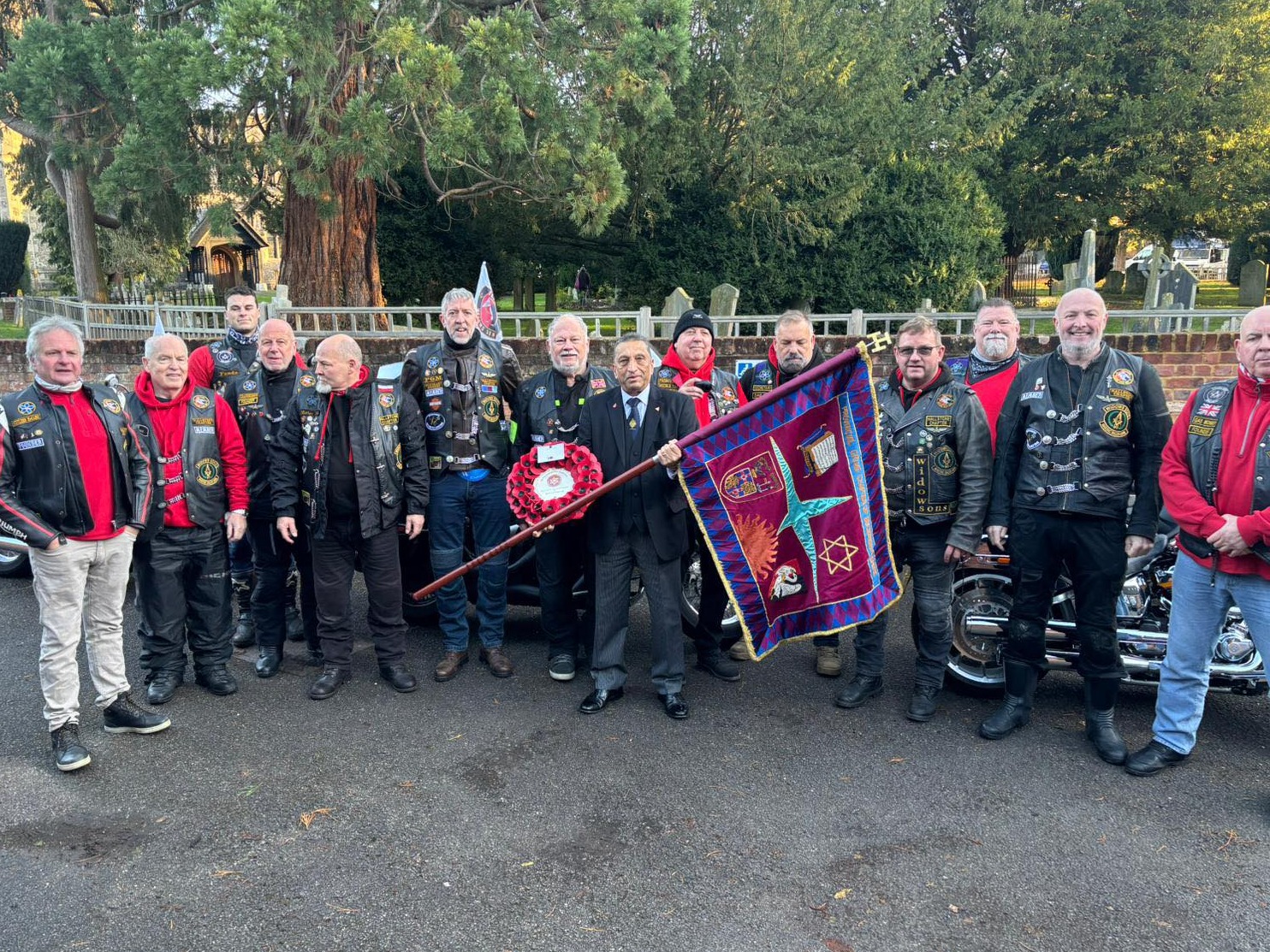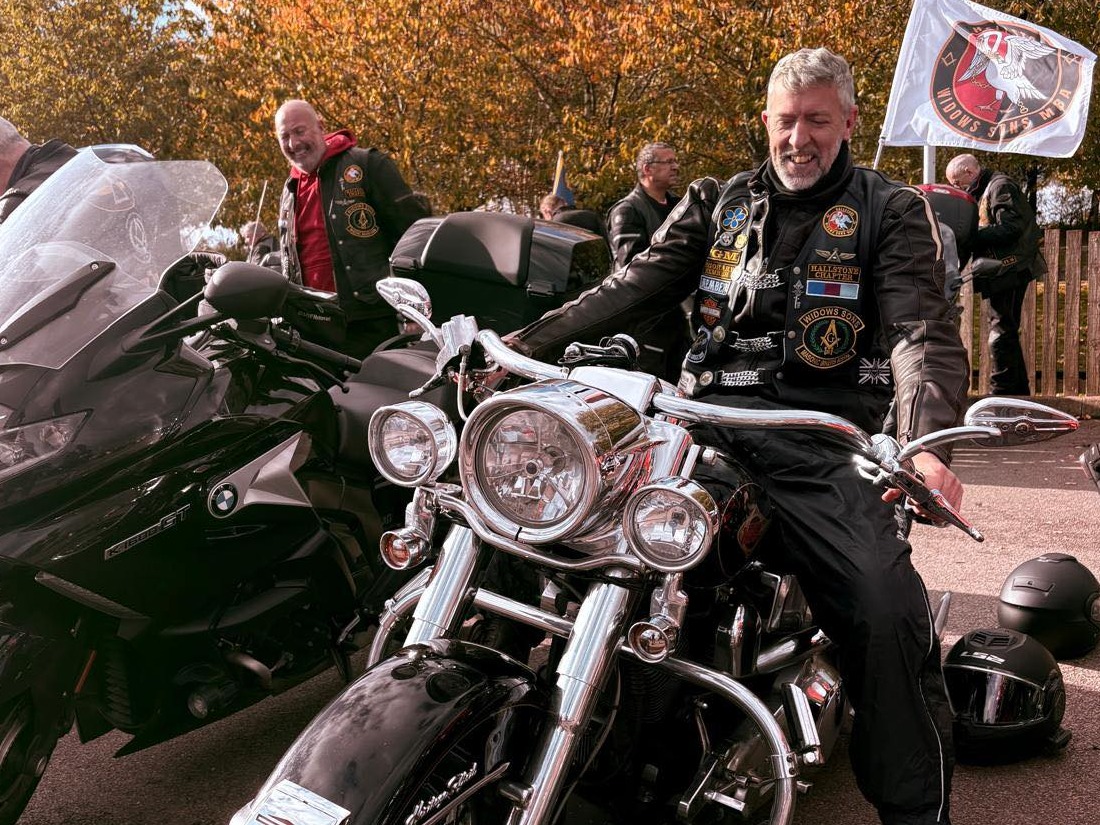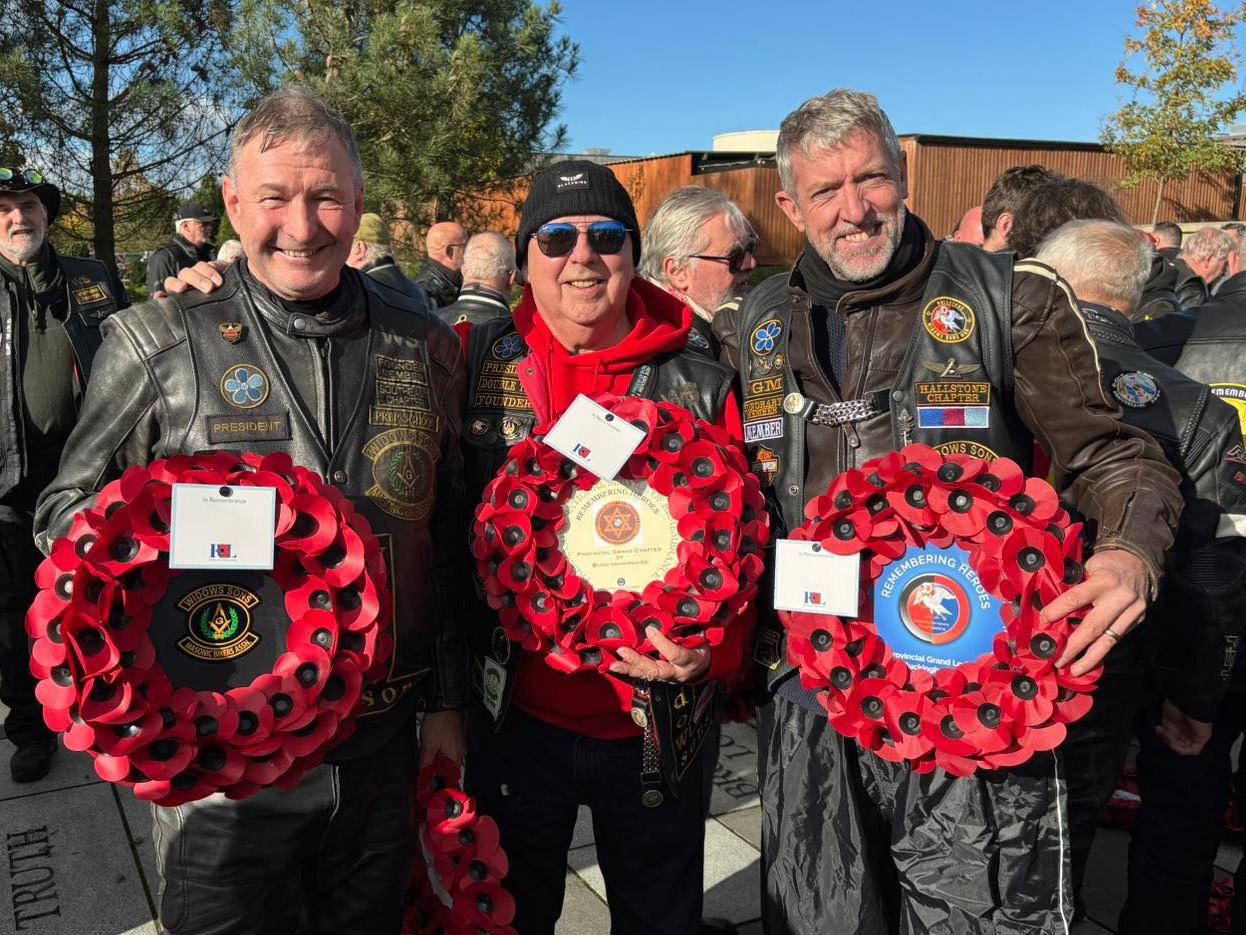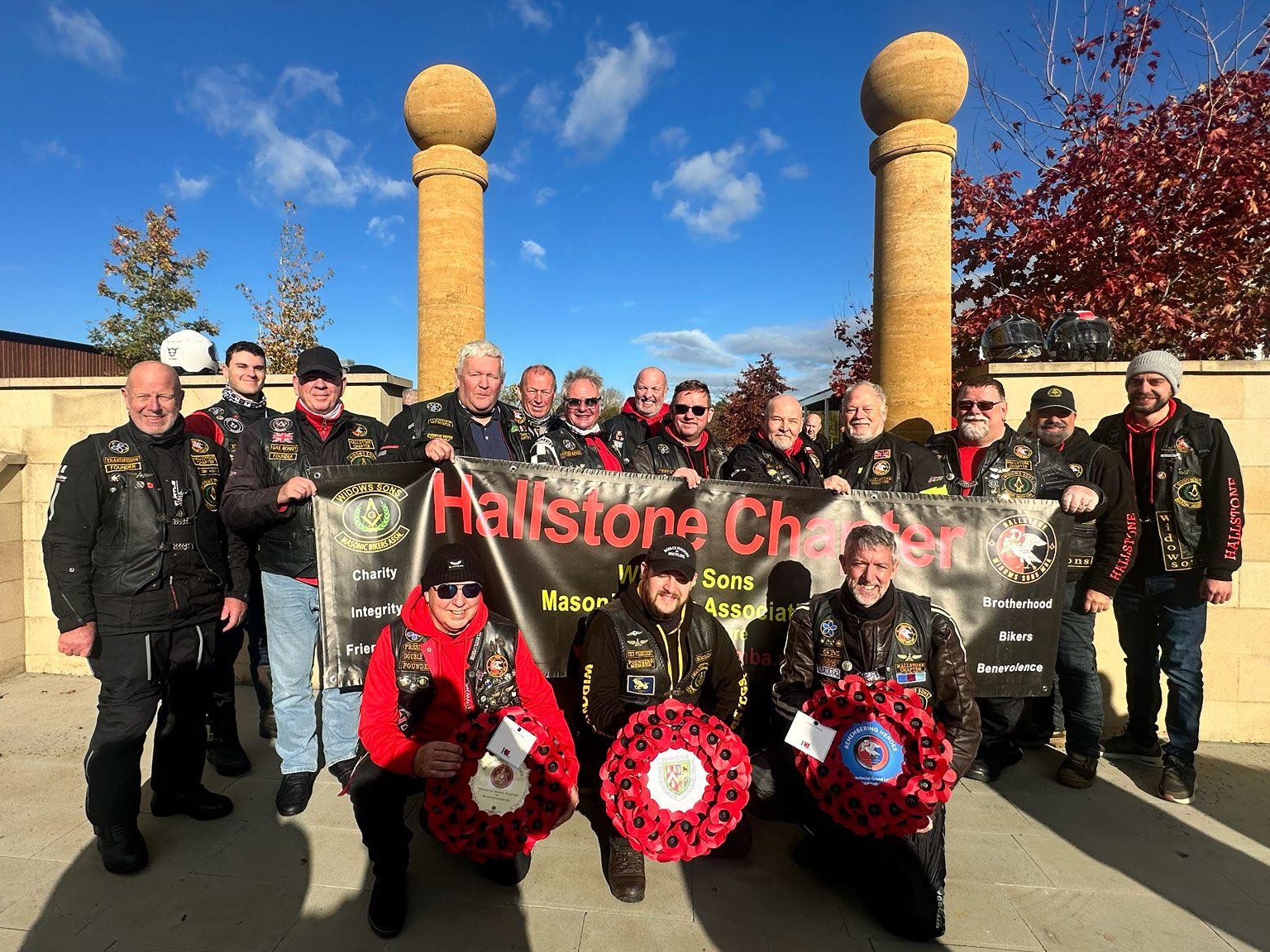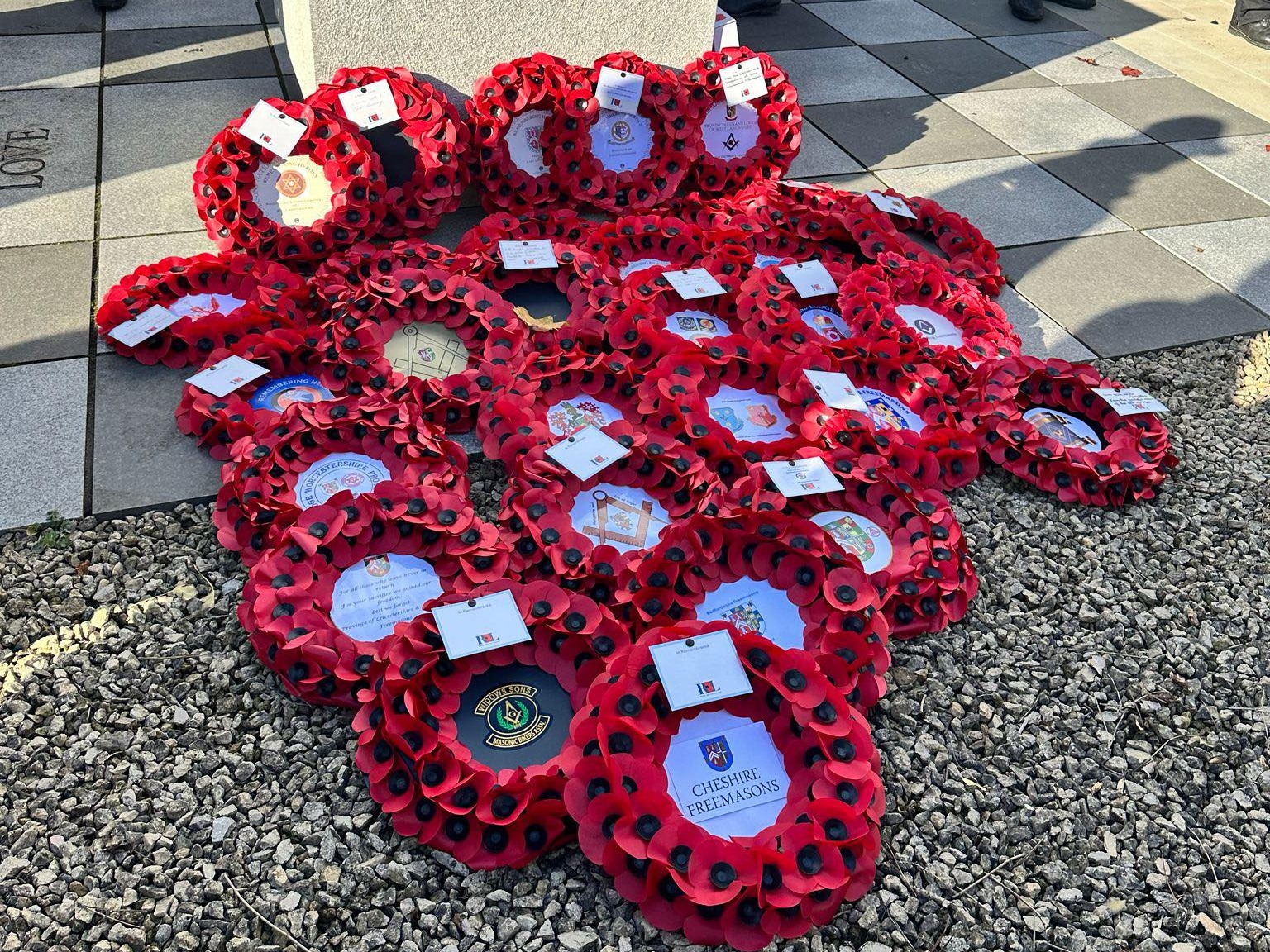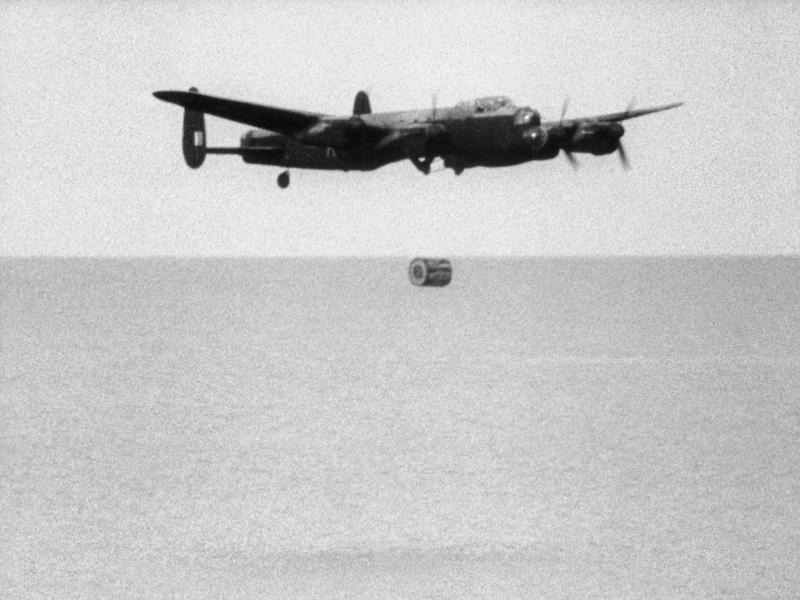A Special Duty of Honour and Remembrance
On Saturday 25th October, members of the Hallstone Chapter Widows Sons Masonic Bikers Association, were honoured to be tasked with a special duty on behalf of Buckinghamshire Province.
The brethren were entrusted to deliver two memorial wreaths — one representing the Holy Royal Arch and the other the Craft — to the National Memorial Arboretum in Staffordshire.
These wreaths will be laid by our Provincial Grand Master,
RW Tim Anderson, Deputy Provincial Grand Master,
RW Neil Robertson, and Provincial Scribe Ezra, Excellent Companion Mel Shah, as part of the Province’s tribute to the fallen on 1st November.
The Journey Begins
The day began early, with 14 members meeting at Beaconsfield Masonic Centre at 8:30 a.m.
Accompanied by our Provincial Grand Master — himself a biker and proud member of the Hallstone Chapter — we received the Holy Royal Arch wreath from Provincial Scribe Ezra, Excellent Companion Mel Shah.
After sharing coffee and a quick photo opportunity, the Hallstone Chapter riders set off north on the M40, heading for Tamworth Masonic Centre — just as the weather gods decided to inflict a few heavy showers upon us!
A Warm Welcome in Tamworth.
Upon arrival, the riders were warmly welcomed and hosted by the local brethren. Here, they rendezvoused with representatives from some of the 46 other chapters of the Widows Sons Masonic Bikers Association.
After more coffee, good-natured banter, and a detailed ride briefing, the convoy — numbering around 210 motorcycles — departed at 1:00 p.m. Ride marshals guided the procession safely to the National Memorial Arboretum, following a route carefully chosen to allow film crews to capture the full spectacle of the ride.
Thankfully, the weather gods relented, blessing the group with sunshine for the remainder of the day
At the National Memorial ArboretumUpon arrival, the Hallstone Chapter quickly assembled for a photo shoot near the main entrance, proudly displaying both wreaths and the Chapter banner.
The team then received the Craft wreath from Greg Kirby, Chairman of the WSMBA, before proceeding to the Masonic Memorial Garden, where John “Grumpy” Perridge led a moving rendition of The Unbroken Chain — a fitting and heartfelt tribute to those Masons who made the ultimate sacrifice.
A Moment of Pride and Reflection
The team took full advantage of the beautiful surroundings for further photographs, particularly in front of the two symbolic pillars at the entrance to the garden — a proud moment marking another meaningful contribution by the Widows Sons in support of our Masonic family and the enduring act of remembrance.
It was truly a fantastic day and an honour for Hallstone Chapter to play our part in this special event

